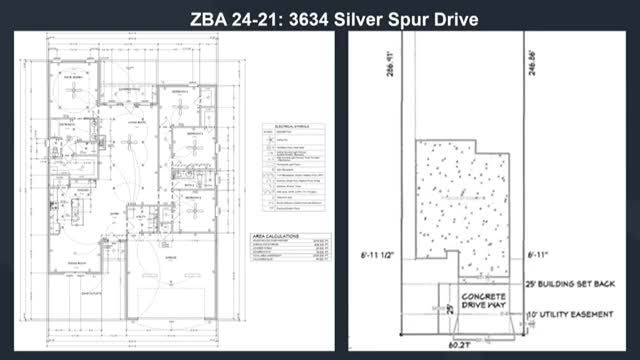Confusion over building setbacks halts construction project
July 01, 2024 | San Angelo, Tom Green County, Texas

This article was created by AI summarizing key points discussed. AI makes mistakes, so for full details and context, please refer to the video of the full meeting. Please report any errors so we can fix them. Report an error »

In a recent government meeting, discussions centered around a property development issue that has raised questions regarding building setbacks and homeowner association (HOA) regulations. The meeting began with a recommendation for a project, but quickly shifted focus when concerns were raised about whether the HOA had approved the plans. It was revealed that the HOA's approval had not been verified, leading to confusion among the committee members.
Daryl Calder, the property owner, clarified that the confusion stemmed from measuring setbacks from the curb line instead of the property line, which resulted in a five-foot discrepancy. He asserted that there is no HOA governing the property, contradicting earlier claims that suggested otherwise. Calder emphasized that the misunderstanding arose from miscommunication regarding the property's address and the existence of deed restrictions rather than an HOA.
Britney Davis, a representative from the development team, supported Calder's statements, noting that there had been confusion between different developments in the area. She confirmed that while there are deed restrictions, there is no active HOA involved in this case.
The meeting also addressed the technical aspects of the construction, particularly the implications of the five-foot setback error. The construction team expressed concerns about the feasibility of adjusting the building's position without incurring significant costs, as plumbing and electrical installations were already in place. The director of planning and development services inquired about the project's timeline, highlighting that delays had already occurred due to weather and the current setback issue.
As the meeting progressed, it became clear that the resolution of this matter would require further collaboration between the city staff, the developers, and the property owner to ensure compliance with regulations while minimizing disruption to the ongoing construction. The discussions underscored the importance of clear communication and adherence to zoning laws in property development.
Daryl Calder, the property owner, clarified that the confusion stemmed from measuring setbacks from the curb line instead of the property line, which resulted in a five-foot discrepancy. He asserted that there is no HOA governing the property, contradicting earlier claims that suggested otherwise. Calder emphasized that the misunderstanding arose from miscommunication regarding the property's address and the existence of deed restrictions rather than an HOA.
Britney Davis, a representative from the development team, supported Calder's statements, noting that there had been confusion between different developments in the area. She confirmed that while there are deed restrictions, there is no active HOA involved in this case.
The meeting also addressed the technical aspects of the construction, particularly the implications of the five-foot setback error. The construction team expressed concerns about the feasibility of adjusting the building's position without incurring significant costs, as plumbing and electrical installations were already in place. The director of planning and development services inquired about the project's timeline, highlighting that delays had already occurred due to weather and the current setback issue.
As the meeting progressed, it became clear that the resolution of this matter would require further collaboration between the city staff, the developers, and the property owner to ensure compliance with regulations while minimizing disruption to the ongoing construction. The discussions underscored the importance of clear communication and adherence to zoning laws in property development.
View full meeting
This article is based on a recent meeting—watch the full video and explore the complete transcript for deeper insights into the discussion.
View full meeting
